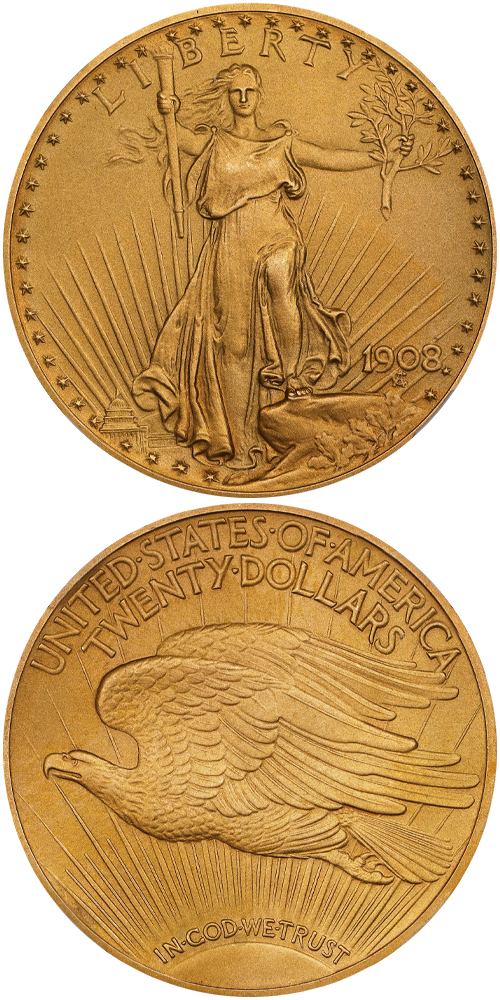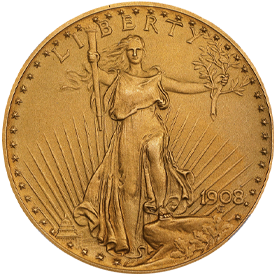Designed by: Augustus Saint-Gaudens
Issue Dates: 1908-1915
Composition: 90% gold, 10% copper
Diameter: 34 mm
Weight: 33.43 grams (516 grains)
Edge: Lettered E PLURIBUS UNUM
Proof Mintage: 687
Proof strikes of the Saint Gauden’s double eagle were made in Philadelphia from 1908 through 1915. On many Proofs of this period, including the Lincoln Cent, Buffalo Nickel and the lower denomination gold coins, the mint experimented with alternative finishes to the traditional brilliant, mirrored fields and (occasional) frosted devices. The gold coins in particular were given a matte, sandblast finish in 1908 which was quite dull and non-reflective. This proved unpopular with collectors and in 1909 and 1910, a Satin or “Roman finish” was seen which more closely resembled the look of conventional business strikes. This too failed to excite the collecting public.
In 1911 and continuing through 1915, the mint returned to the “sandblast” finish seen in 1908, with varying shades of color and depth – with the 1912 being a bit darker and richer than the other dates during this period.
While the original mintage figures for Saint Gaudens Proof $20s range from a low of 50 pieces (1915) to a high of 167 (1910) not all were sold and survival estimates to day for most of the dates fall into the 40-to-60-piece range.
Despite their unpopularity at the time of their original issue, collectors began to appreciate these pieces in the early 1970s, and since that time, values have risen steadily. Today (2024) prices for Gem examples (PR-65-67) are in the low to mid six-figure range. Choice pieces (PR-63-64) can be acquired in the mid to upper five-figure range.







